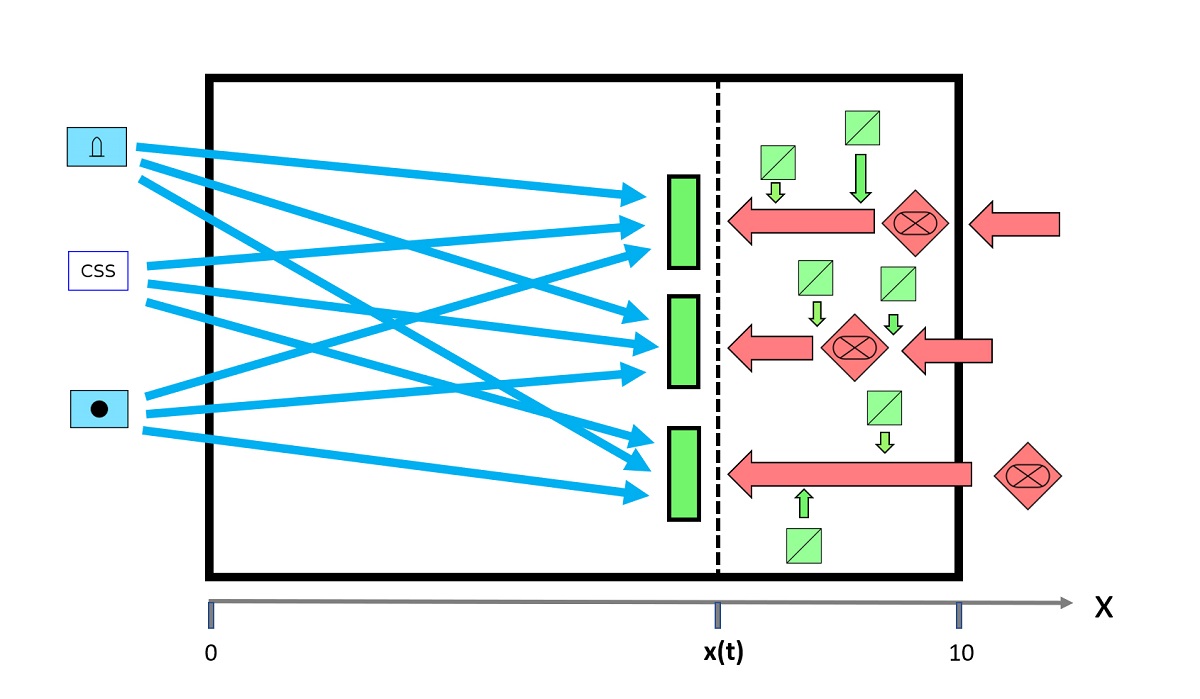A proxy war, between a coalition of countries, BLUE and a country, RED, is considered. RED wants to increase the size of the RED territory. BLUE wants to involve more regions in trade and other types of cooperation. GREEN is a small and independent nation that wants to become a member of BLUE. RED attacks GREEN and tries to invade. BLUE decides to give optimal arms support to GREEN. This support can help GREEN in the war against RED and simultaneously reduce the military power of RED, which is valuable to BLUE, also outside this proxy war, since RED may confront BLUE also in other regions. The optimal control problem of dynamic arms support, from the BLUE perspective, is defined in general form. The objective function is a weighted sum of the present value of the free GREEN territory and the present value to BLUE of the net loss of military resources in the RED army. The net loss of RED at a particular point in time is a function of the location of the front line and the size of the mobile GREEN forces behind the RED line. First, it is assumed that the expected net loss is proportional to the force ratio behind the red front line. It is proved that the net loss function is a strictly concave quadratic function of x, the location of the front line. It is also proved that the unique maximum of the net loss function occurs at the same front location, also if the net loss function is proportional to the strength ratio behind the RED lines, raised to any strictly positive exponent. From the BLUE perspective, there is an optimal position of the front. This position is a function of the weights in the objective function and all other parameters. Optimal control theory is used to determine the optimal dynamic BLUE strategy, conditional on a RED strategy, which is observed by BLUE military intelligence. The optimal arms support strategy for BLUE is to initially send a large volume of arms support to GREEN, to rapidly move the front to the optimal position. Then, the support should be almost constant during most of the war, keeping the war front location stationary. In the final part of the conflict, when RED will have almost no military resources left and tries to retire from the GREEN territory, BLUE should strongly increase the arms support and make sure that GREEN rapidly can regain the complete territory and end the war

